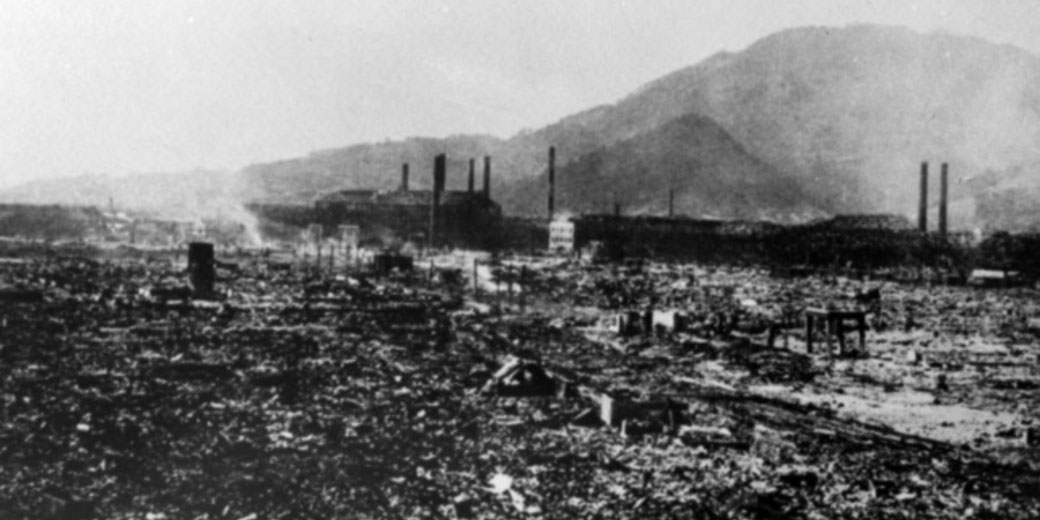The incredible story of the man who survived the bombings of both Hiroshima and Nagasaki

In the summer of 1945 two Japanese cities became the first targets of nuclear weapons in warfare, with the attacks producing large scale destruction and severe suffering.
However, from the ruins of both events, there came a remarkable survival story of Tsutomu Yamaguchi, who lived through both blasts and later gave an account of what he had experienced.
Early life and arrival in Hiroshima
He was born on 16 March 1916 in Nagasaki, where he grew up and later studied technical design before joining Mitsubishi Heavy Industries as a draftsman.
During a three-month business trip in the summer of 1945 he travelled to Hiroshima, where he and two colleagues completed work on a new oil tanker.
By a cruel twist of fate, the trip placed him in Hiroshima on 6 August 1945, the day the United States dropped the first atomic bomb used in warfare.
On the morning of 6 August, the sky was clear and bright. At about 8:15 a.m., Yamaguchi heard the hum of an aircraft and looked up to see the American B-29 bomber Enola Gay carrying the bomb known as “Little Boy,” which had a yield of about 15 kilotons.
In an instant, a blinding flash lit the sky, and the bomb exploded with a force that destroyed the city completely.
It killed at least 90,000 people in the following weeks, with tens of thousands dying instantly.
Yamaguchi had been returning to the shipyard after forgetting a personal seal, which left him exposed when the bomb detonated.
He was about three kilometres from the hypocentre and suffered severe burns to his upper body.
The blast destroyed his eardrums and left him temporarily blind for several hours.
As the shockwave struck, it hurled him into a nearby potato patch and buried him under debris.
After regaining consciousness, he crawled out and staggered through the ruins in search of shelter.
Evacuation and second bombing
Throughout that day he saw destruction that was hard to believe. Across the city fires raged, and the cries of the injured filled the air.
Eventually he found his colleagues, who had also survived with injuries. Together they walked to a train station that still operated in a reduced capacity because the railway lines had escaped major damage.
On 8 August they boarded a train to Nagasaki, and they travelled for many hours through countryside that was crowded with refugees who fled the destruction.
His parents and wife were shocked to see him return alive, his face and arms badly burned.
After reaching Nagasaki, Yamaguchi received treatment for his wounds while he rested in his family home.
Despite his condition, he reported for work on 9 August to explain the Hiroshima bombing to his superiors.
At about 11 a.m., as he spoke to his boss, another American B-29 dropped the second atomic bomb, known as “Fat Man,” which had a yield of about 21 kilotons.
The bomb detonated over the Urakami Valley about three kilometres from Mitsubishi’s shipyard, where Yamaguchi worked.
The blast destroyed much of the city, killed at least 40,000 people instantly, and wrecked Nagasaki’s industrial district.
In the chaos his office collapsed, and he crawled out again, and he suffered more burns and injuries.
Aftermath and later life
Over the following days he searched for supplies and cared for his family. His wife and infant son survived, but radiation sickness left him weak and feverish.
His family later suffered radiation-related illnesses, and his son developed serious health problems linked to exposure.
In Nagasaki, thousands of residents died from burns and the effects of radiation exposure, while the city lay in ruins.
The combined death toll from both bombings eventually rose to well over 150,000 people.
However, on 15 August 1945 Japan surrendered, which brought the war to an end.
In the decades that followed, Yamaguchi lived with the long-term effects of what he went through.
He worked as a translator for the American occupation authorities and later became a teacher.
Throughout his life he suffered from deafness in one ear, cataracts, chronic pain from his burns, and recurring illnesses, including leukemia.
In March 2009 the Japanese government officially recognised him as the only person to be formally acknowledged as having survived both bombings, which gave him the rare status of a double hibakusha, even though dozens of others also endured both attacks.
He appeared in documentaries, gave interviews, and spoke publicly about the dangers of nuclear weapons as part of international disarmament efforts.
His wife died of kidney and liver cancer in 2008 at the age of 88, two years before his own death from stomach cancer on 4 January 2010 at the age of 93.
His life told a story of exceptional survival that drew worldwide attention as a compelling account of the horrors of nuclear warfare.
What do you need help with?
Download ready-to-use digital learning resources
Copyright © History Skills 2014-2025.
Contact via email
With the exception of links to external sites, some historical sources and extracts from specific publications, all content on this website is copyrighted by History Skills. This content may not be copied, republished or redistributed without written permission from the website creator. Please use the Contact page to obtain relevant permission.





